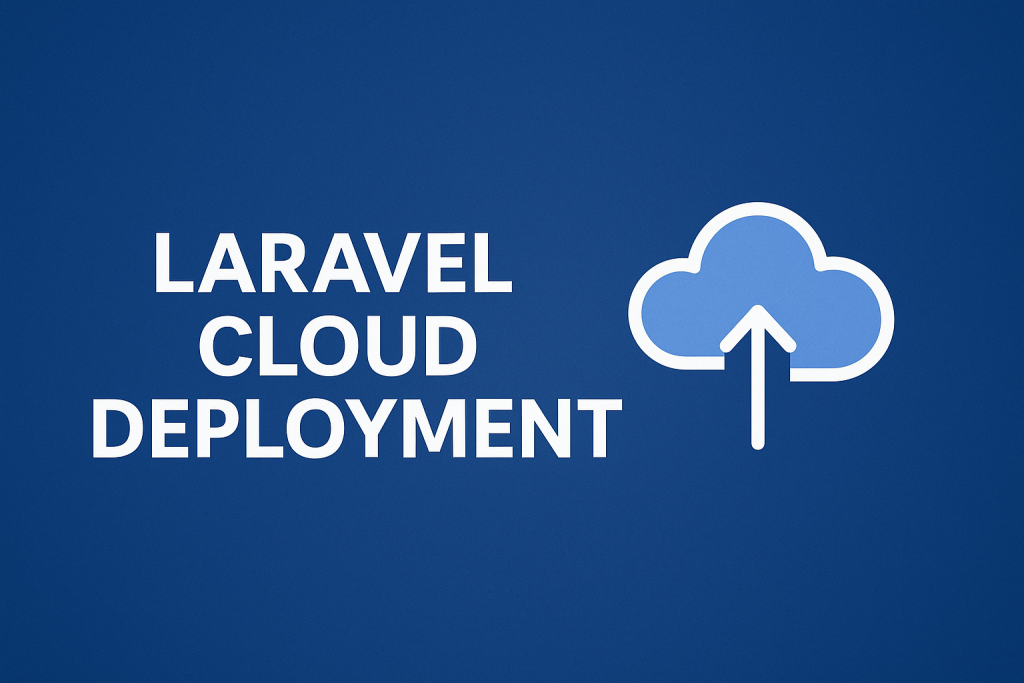
Laravel Cloud: The Fastest Way to Deploy Laravel Apps Without Losing Your Mind
Let’s be honest — deploying a Laravel app used to feel like a mini DevOps project. Spin up a VPS, set up Nginx, configure environment variables, secure your app, maybe set up Git hooks… and that’s just for staging.
But things have changed.
If you’ve been around Laravel long enough, you’ve probably heard of Laravel Cloud — a new, official deployment platform tailor-made for Laravel devs who’d rather write code than tinker with servers. And let me tell you — I gave it a spin recently, and I’m kind of annoyed I didn’t try it sooner.
Wait, So What Exactly is Laravel Cloud?
In a sentence: Laravel Cloud lets you deploy your Laravel apps in seconds with zero DevOps pain.
It’s a managed platform — think Vercel or Netlify but custom-built for Laravel. You don’t have to worry about provisioning servers, setting up Docker manually, or getting your queue workers to behave. You just connect your Git repo, click a few buttons, and you’re live.
Some of the standout features include:
- ⚡ One-click deploys via GitHub
- 🌎 Multiple environments (staging, production, etc.)
- 📦 Built-in services like MySQL, Redis, and object storage
- 📈 Monitoring dashboards for CPU, RAM, response times
- 🧱 Auto-scalable infrastructure
- 🔐 SSL and DDoS protection out of the box (thanks to Cloudflare)
It honestly feels like what Forge would’ve evolved into — but built for modern Laravel devs who want zero-downtime deploys and a clear UI.
Getting Started (It’s Really That Simple)
1. Connect Your GitHub
After signing up, the first thing Laravel Cloud asks you to do is connect your GitHub account. Once that’s done, you can pick any repo and start building a new project from it.
No need to manually configure deploy keys or set up webhooks — it handles all of that for you behind the scenes.
2. Choose a Region and Branch
Next, select the region where you want your app to be hosted (there are several options globally), and pick the branch you want to auto-deploy from.
Want main to go straight to production and develop to push to staging? Laravel Cloud has your back.
3. Add Your Environment Variables
This part is clean — Laravel Cloud gives you a UI to manage your .env variables per environment. It’s version-controlled inside the platform (not Git), so no sensitive data leaks, and switching between environments is seamless.
Zero-Downtime Deploys (For Real)
Here’s where things get spicy.
Whenever you push a change to your tracked branch, Laravel Cloud:
- Builds your app in a Docker container (Laravel preset: PHP, Composer, Node, etc.)
- Runs your build scripts (you can customize them — more on this below)
- Deploys the new container behind a load balancer
- Swaps traffic to the new version without dropping a single request
No more “Maintenance Mode” flashes while you push bugfixes. This was a huge win for me when I deployed an app under light traffic — I didn’t even get a single 500 spike.
Built-in Services You Don’t Have to Set Up
Laravel Cloud isn’t just about pushing code. It also gives you tools you’d normally have to set up on your own:
- Databases — MySQL & Postgres are just a click away
- Redis — For queues, caching, sessions
- S3-compatible storage — For user uploads and assets
- Queue workers — Configure your Laravel jobs right from the dashboard
- Scheduler — Set up cron tasks for scheduled commands like
php artisan schedule:run
It basically bundles what used to take hours (or even days) into a few dropdowns and toggles. No exaggeration.
Custom Build & Deploy Scripts
One feature I didn’t expect to like as much: full control over your build and deploy scripts.
By default, it runs:
composer install --no-dev --optimize-autoloader
php artisan migrate --force
npm ci && npm run buildBut you can totally override that per project. So if you use Bun or you’re doing SSR with Inertia or Livewire, you can make adjustments easily.
Real-Time Monitoring and Logs
Another thing Laravel Cloud does well is visibility.
You get:
- CPU & memory graphs
- HTTP response stats
- Log viewer (per deploy, per environment)
- Artisan command runner
No more jumping into a remote SSH session just to see what failed. It’s all right there in the dashboard.
Who is This For?
Laravel Cloud is perfect if:
- You’re building MVPs, SaaS apps, or client projects
- You want speed, reliability, and zero-infra stress
- You hate managing servers (like me)
- You want real Laravel-native deployment tooling, not duct-taped CI pipelines
That said, if you’re already deep into a Kubernetes setup, you probably don’t need this. But if you’re like most devs who just want to ship — this is your shortcut.
Final Thoughts
Laravel Cloud doesn’t just simplify deployment — it rethinks it for Laravel devs in 2025.
Gone are the days of setting up Forge, tweaking Nginx configs, or wondering if your cron job fired correctly. With Laravel Cloud, you connect your repo, set up your variables, and let the platform take care of the rest.
If you’re serious about building and scaling Laravel apps, this is absolutely worth checking out.
Pro Tip: You can even mix this with your own CI/CD if you want. Just use Laravel Cloud for the deploy layer — and keep GitHub Actions or other workflows upstream.
